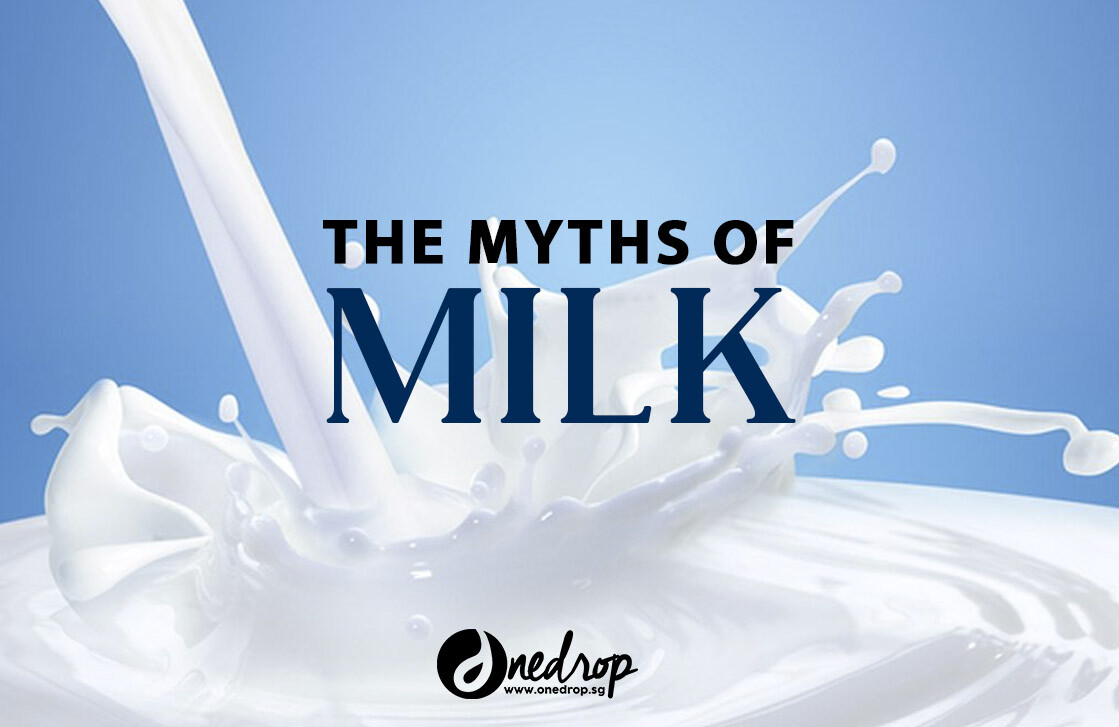
THE MYTHS OF MILK
This post is contributed by One Drop member –Eva Rosdiana.
For decades, we were told that milk is compulsory food in our diet. These statements and understandings have been rooted deeply in our society.
The high demand of milk has led to industrialization in dairy industry. Today, in the United States for instance, an estimated $4.5 billion is subsidizing and supporting the marketing campaigns by the dairy industry. That makes us, humans, as the only species of mammals that drinks another species’ milk after infancy.
My curiosity about milk started in 2011, when I read an article from Mike Geary, a dietician and nutritionist on “The Truth of Milk”. In 2013, I read a book from Dr Hiromi Shinya titled “The Enzyme Factor”. Dr Hiromi Shinya is a Japanese surgeon who is pioneer in colonoscopy and one of the leading gastroenterologists in the world. He wrote that based on his personal, clinical experiences and observations from over 300,000 colonoscopies, cow milk is harmful agent to humans.
The reason behind Lactose Intolerant
Lactose (milk sugar) is a two-chain carbohydrate that consists of one molecule Glucose and one molecule Galactose. Lactose is also present in human breastmilk. We need a digestive enzyme Lactase to break down Lactose into Glucose and Galactose. A lactose-intolerant person does not have sufficient Lactase to digest lactose. This causes the undigested lactase to go into our colon and fermented by bacteria. It then results into abdominal pain, bloating, gas, nausea, diarrhea, and any other discomfort within 30 minutes to 2-hours after consumption.
90% of Asians has insufficient Lactase
In general, the amount of Lactase in human reduces after the age of 3 years old. All humans in early civilizations become lactose intolerant after the weaning years. It was only during the invention of agriculture some thousands of years ago that allowed cultures in the Western hemisphere to eventually develop lactase persistence. Therefore, lactose intolerance rates among northern Europeans can go as low as 5% of adults while in some Asian communities, it can go as high as over 90% (See the map chart). [Source]
Fermentation
Fermented dairy products such as yogurt, kefir, cheese reduce the amount of lactose significantly. During fermentation process, lactose is broken down by the bacteria colony (mainly Lactobacillus) to form lactic acid and sometimes alcohol or carbon dioxide. Lactose-intolerant people can tolerate these products.
However, some fermented dairy products are either further processed or added with high amount of sugar. Even though some products labeled as “healthy products”, we should avoid sweetened yogurt and processed cheesebecause they may cause more harm to our body.
Milk and Casein Allergy
Milk contains protein, called Whey and Casein. Casein can also cause allergy, and usually it is called milk-allergy.
Casein allergy is different from Lactose intolerance. Lactose intolerance causes abdominal and digestive discomfort. Casein allergy can cause symptoms such as a skin rash or hives; swollen lips, mouth or tongue; nasal congestion, runny nose, watery/itchy eyes, and so on [source]. If you have casein allergy, you should avoid all dairy products including the fermented ones.
Casein and whey can cause an actual immune response and be considered a true allergy by promoting an IgE (Immunoglobulin E) response from the immune system. The response can cause inflammation. The number of people with milk allergies is estimated to be far below that of lactose intolerance [source].
The Bad and Worse
The milk that is sold in the supermarket has gone through a heavy process of homogenization and pasteurization. It results in milk oxidation and hydrogenation. Dr Shinya wrote that a calf that is given milk sold in the supermarket will die within 4-5 days. It is because that milk does not contain any living enzymes. He also observed that the cases of dermatitis atopic and allergy have been increasing significantly in the last 30 years. This is in line with the introduction of milk in Japanese school lunch menu since 1960. Pregnant women who consume milk as “source of calcium” also will increase the risk of dermatitis atopic in the babies.
Homogenization
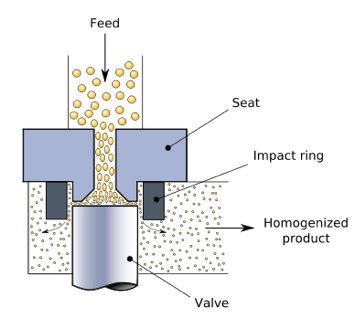
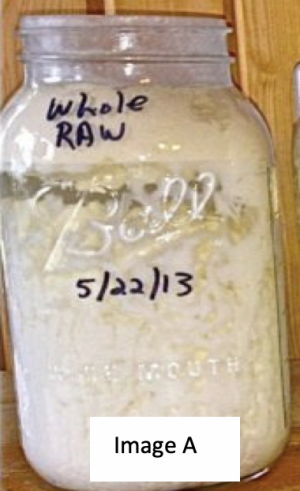
Homogenization is a process to give milk its rich, white color and smooth texture. The homogenization process involves reducing the size of the fat globules – the cream that rises to the top of the glass or bottle – into minuscule portions that are dispersed evenly throughout the milk. The purposes of homogenization are:
- to prevent separation of whey and curd (Image A)
- to prolong the shelf life.
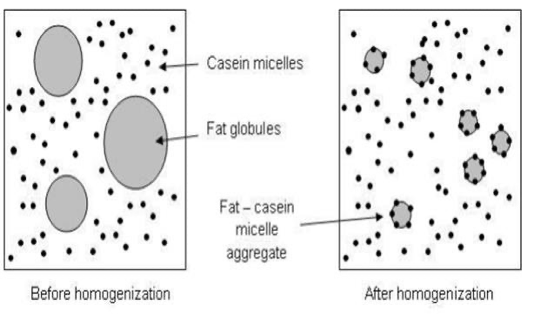
Disadvantages of homogenized milk:
- Free radicals resulting from oxidation and hydrogenation of fat globules
- Bondage with casein to form new aggregation due to smaller fat globules
- Globules get into bloodstream because not properly digested.
- Inflammation because the globules may enter arteries. It destroys our gut microbiome and hence bad bacteria increases in our gut.
[Source: Dr Kurt Oster; Dr Hiromi Shinya – The Enzyme Factor]
Pasteurization
The homogenized milk is brought for pasteurization. Pasteurization is the process of heating the milk at high temperature to eliminate bacteria and extend the shelf life of milk.
The most common pasteurization process in the market are [source]:

Disadvantages of pasteurization are:
- Denatured protein
- Damaged natural calcium – hence many manufacturers add synthetic calcium
- Elimination of living enzymes that are present in raw milk, including Lactase. Enzymes will get destroyed from 43°C.
- Elimination of vitamins (such as A, C, B6, B12)
Truth or False – Milk is the source of Calcium
The most common misconception is milk can prevent osteoporosis. This is based on a scientific statement that calcium in our body reduces as we age. As milk contains high amount of calcium, we are advised to consume milk to add calcium into our body. Can our body absorb milk calcium fully?
In normal situation, plasma calcium (Plasma Ca) level is 9-10mg. When we consume milk, calcium concentration increases significantly. But the bioavailability of calcium from dairy product is only 30% [source]. When Plasma Ca is too high, our body tries to bring it to normal level by disposing the excess calcium through our kidneys and coming outas urine. This will add burden into our kidneys.
Additionally, synthetic calcium that is mostly added in milk can be harder for our body to process.
Calcium Absorption
To fully absorb and use calcium, we need these 3 micro-nutrients:
- Magnesium (Mg) – Stimulate Calcitonin hormone in Thyroid gland to help Calcium deposit to bone (link). Minimum ratio Ca:Mg = 2:1 or less. Ratio Ca:Mg in milk is 4:1. Best sources of magnesium are raw leavy vegetables and raw cacao.
- Vitamin D3 – Absorbs Mg and Ca by 20x and helps to bring these minerals to blood. Pasteurized milk changes Vitamin D3 in raw milk to D2. Best source is from sunlight.
- Vitamin K2: Fat soluble vitamin. Primary function is to transport Calcium from joints and blood to bone. Good source: Natto.
Conclusion
Milk is one of the heaviest marketed products, also the second most hydrogenated products after cooking oil. After 2 years old, we do not need milk as source of nutrition.
Kids should get their nutrition from whole food after they are weaned off from breastmilk or after 2 years old if they are on formula milk. Growing-up milk and pregnancy milk are not necessary because they contain high amount of sugar and hydrogenated oil.
If you like the taste of dairy products, try to reduce the frequency and amount of consumption. It is not necessary to make it compulsory in the diet. We can always get the nutrients in milk from other whole food sources.
If you like Eva’s articles and would like to purchase the Young Living oils or have further clarifications, you may get in touch with Eva via Facebook or Instagram. If you are ready to sign up as member with Eva, you may click here.





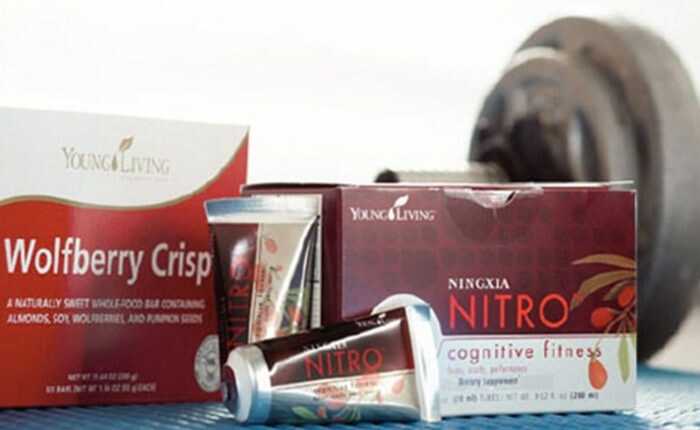









0 Comments